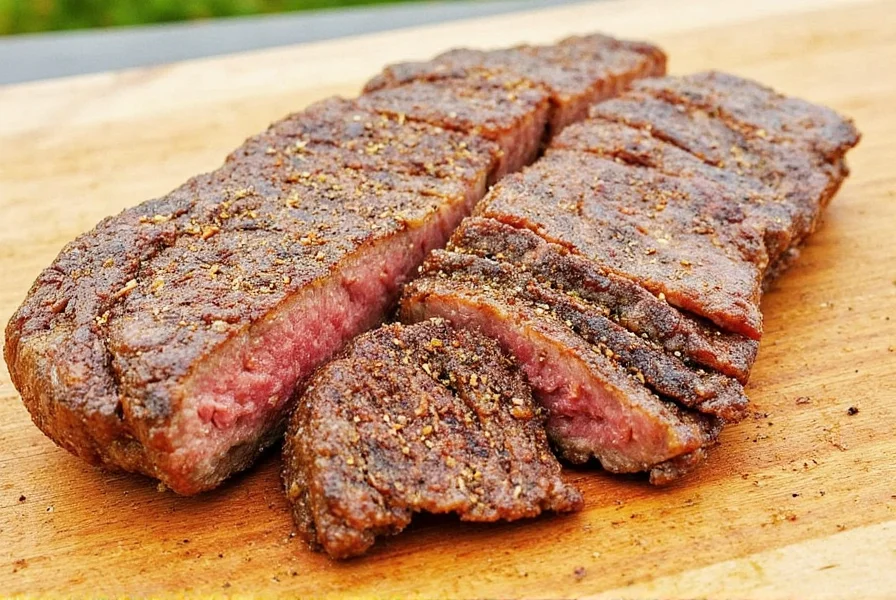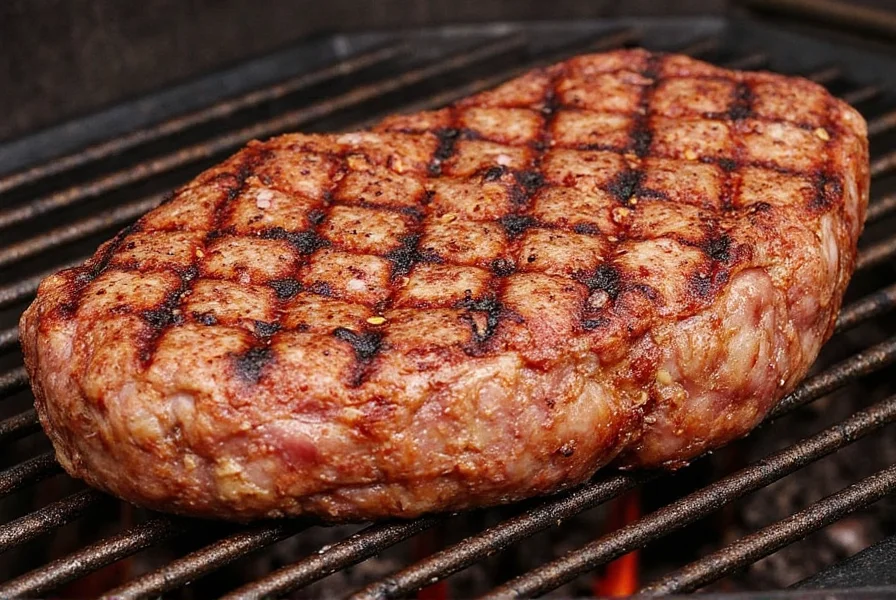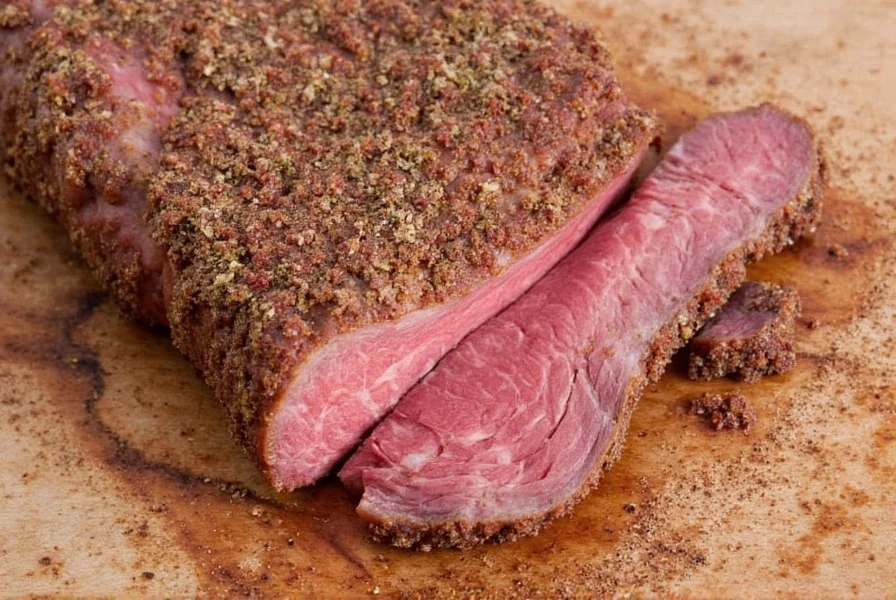To achieve restaurant-quality steak, proper seasoning is essential. The right blend of salt, pepper, and complementary spices creates a flavorful crust while locking in juices. This guide covers science-backed techniques for perfect steak seasoning every time, whether you're grilling, pan-searing, or broiling.
Table of Contents
- Why Steak Seasoning Matters
- Steak-Specific Seasoning Types
- Top 7 Steak Seasoning Techniques
- Create Your Signature Steak Rub
- Best Seasonings for Steak
- Steak Seasoning FAQs
- Final Tips for Perfect Steak
Why Steak Seasoning Matters
Steak seasoning isn't just about adding flavor—it's a science that transforms texture, appearance, and taste. Proper seasoning triggers the Maillard reaction (browning process), creates a savory crust, and enhances natural beef flavors. Unlike general meat seasoning, steak requires precise salt timing and balanced spices to avoid overpowering the meat's natural richness.

Steak-Specific Seasoning Types
Only two seasoning types are truly effective for steak:
| Type | Description | Best For | Examples |
|---|---|---|---|
| Dry Rubs | Coarse spice blends applied directly to surface | Grilling, searing, and smoking steaks | Classic steak rub (salt, pepper, garlic), coffee-chili rub |
| Simple Salt & Pepper | Minimalist approach using only kosher salt and fresh black pepper | High-quality cuts like ribeye or filet mignon | Kosher salt, freshly cracked black pepper |
Note: Wet marinades are generally not recommended for premium steaks as acids can break down texture. Curing salts are only used for specific cured beef products like pastrami.
Top 7 Steak Seasoning Techniques
- Salt Timing is Critical: Apply kosher salt 45-60 minutes before cooking for optimal moisture retention. For thicker cuts (1.5+ inches), salt up to 24 hours ahead (dry brining).
- Pepper After Cooking: Black pepper burns easily at high heat. Add freshly cracked pepper after searing for maximum flavor.
- Use Coarse Salt: Fine table salt penetrates too quickly. Kosher salt provides better surface coverage and controlled absorption.
- Pat Steak Dry: Always pat steak dry with paper towels before seasoning. Moisture prevents proper crust formation.
- Apply Evenly: Use your hands to press seasoning into all surfaces, including edges. Don't just sprinkle—coat thoroughly.
- Temperature Matters: Season at room temperature. Cold meat won't absorb seasoning properly.
- Test Before Cooking: Sear a small piece of raw steak in a hot pan to test seasoning balance before cooking the whole cut.

Create Your Signature Steak Rub
Follow this 3-step process for restaurant-quality steak seasoning:
Step 1: Base Ingredients
- Salt: 1.5 tsp kosher salt per pound of steak
- Pepper: 0.5 tsp freshly cracked black pepper (add after cooking)
Step 2: Flavor Enhancers
Choose 1-2 complementary spices:
- Smoky: 1 tsp smoked paprika + 1/2 tsp garlic powder
- Herbaceous: 1 tsp dried rosemary + 1/2 tsp thyme
- Spicy: 1/2 tsp cayenne + 1 tsp brown sugar
Step 3: Final Touches
- For premium cuts: Use only salt and pepper
- For cheaper cuts: Add 1/2 tsp onion powder for depth
- Always store rub in airtight container away from light

Best Seasonings for Steak
When buying pre-made steak seasonings, look for these key features:
| Product | Key Features | Best Steak Cuts | Why It Works |
|---|---|---|---|
| McCormick Grill Mates Montreal Steak Seasoning | Garlic, onion, pepper, and dill | Strip steak, sirloin | Balanced flavor without overpowering beef |
| Badia Steak Seasoning | Smoked paprika, cumin, and chili | Flank steak, skirt steak | Perfect for marinating and grilling tougher cuts |
| Steakhouse Reserve Original Rub | Espresso, molasses, and sea salt | Ribeye, filet mignon | Creates rich caramelized crust without bitterness |
| Simply Organic Steak Seasoning | 100% organic ingredients, no fillers | All cuts | Minimalist blend focusing on natural beef flavor |
Steak Seasoning FAQs
Should I season steak before or after cooking?
Always season steak before cooking. For salt, apply 45-60 minutes before cooking to allow moisture reabsorption. For pepper and other spices, apply immediately before cooking. Never season after cooking—this prevents proper crust formation and flavor penetration.
How much salt should I use for steak?
Use 1.5 teaspoons of kosher salt per pound of steak. For thinner cuts (under 1 inch), reduce to 1 teaspoon. The salt should create a visible but not excessive coating. When in doubt, start with less—you can always add more after cooking.
Can I use marinades for steak?
Only for tougher cuts like flank or skirt steak. Marinate for 2-4 hours maximum. For premium cuts (ribeye, filet, strip), avoid marinades entirely as acids break down texture. Instead, use dry rubs or simple salt/pepper.
Why does my steak seasoning burn?
Pepper and sugar-based spices burn at high heat. Always add pepper after searing. For rubs containing sugar (like brown sugar), apply only to thicker cuts (1.5+ inches) and cook at medium-high heat. High heat + sugar = burnt flavor.
What's the best time to salt steak?
For standard cooking: 45-60 minutes before cooking. For dry brining: 12-24 hours in refrigerator. This allows salt to penetrate deeply while drawing out moisture that then reabsorbs, creating juicier steak. Never salt immediately before cooking—it prevents proper crust formation.
Should I use fresh or ground spices for steak?
Use fresh-ground black pepper for maximum flavor. For other spices, ground versions work best as they adhere to the meat surface. Whole spices should be ground before use—whole peppercorns won't distribute evenly and create inconsistent flavor.
Final Tips for Perfect Steak
Mastering steak seasoning comes down to three principles: proper salt timing, minimal spice interference, and understanding your cut's needs. Premium steaks need only salt and pepper, while tougher cuts benefit from targeted rubs. Remember—less is often more. A well-seasoned steak should taste like exceptional beef, not a spice mix.

Now fire up your grill or pan, and experience how proper seasoning transforms ordinary steak into restaurant-quality perfection.











 浙公网安备
33010002000092号
浙公网安备
33010002000092号 浙B2-20120091-4
浙B2-20120091-4